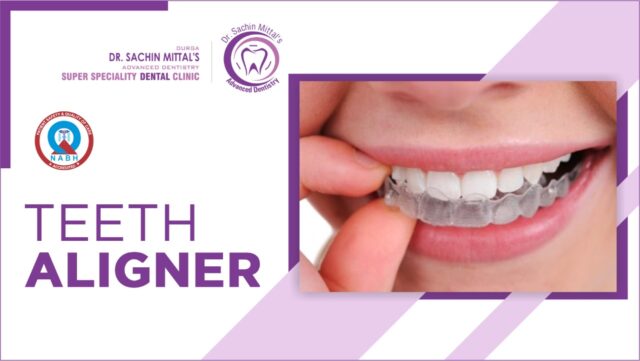Orthodontic devices are a transparent, plastic form of dental braces used to adjust teeth. They are a virtually invisible and removable alternative to braces designed around convenience and flexibility.

Clear-aligner treatment involves an orthodontist or dentist, taking a mold of the patient’s teeth, which is used to create a digital tooth scan.
Aligner trays are custom-built for every patient, depending on the severity of teeth misalignment.
The computerized model suggests stages between the current and desired teeth positions, and aligners are created for each stage. Each aligner is worn for appx 22 hours a day for one or two weeks.
These slowly move the teeth into the position as described by the orthodontist or dentist to the patient.
Aligner Treatment begins with taking x-ray and photographs for diagnostic purposes.
Clear aligners can be used in a variety of different cases, including:
- Crowded Teeth — when the teeth overlap
- Overbites — when the upper front teeth overlap with the lower front teeth
- Under bites — when the lower front teeth overlap with the upper front teeth
- Diastema — when there are small or large gaps between the teeth
- Open Bites — when the front upper and lower teeth slant outward and do not touch when the mouth is shut. This is a very rare type of malocclusion.
- Baby (Misaligned Primary) Teeth — Clear aligners can be used during phase I orthodontic treatment to make room for existing baby teeth and developing permanent teeth. Children between 6 and 10 years of age are candidates for this treatment.

